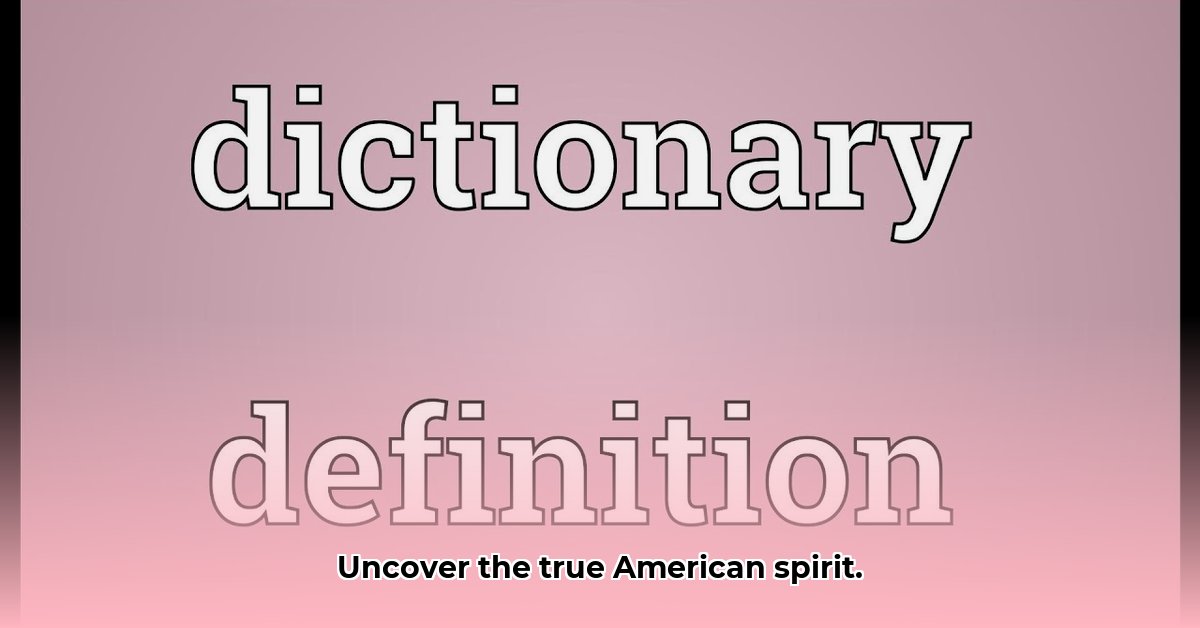American Spirit cigarettes occupy a curious space in today’s market. They promote “natural” cigarettes despite widespread awareness of smoking’s dangers. Are they selling a product or an image? This article dissects American Spirit’s brand, exploring its marketing, “natural” claims, and the ethical questions it raises. We’ll also consider its future in a world with evolving attitudes toward smoking.
Deconstructing the American Spirit Brand: Identity and Marketing Paradox
American Spirit’s core brand message touts “natural” ingredients while selling a product inherently linked to serious health risks. This creates an intriguing paradox. How does the brand foster a loyal following despite the well-documented dangers of smoking? Let’s explore the marketing techniques at play.
Crafting Authenticity: The “Natural” Appeal and Rebellious Image
American Spirit doesn’t just sell cigarettes; it sells a carefully constructed idea of freedom, independence, and a rejection of artificiality. This resonates with consumers seeking authenticity. The minimalist, color-coded packaging reinforces this image of understated coolness, creating a powerful draw.
Does this image genuinely reflect the product, or is it a carefully manufactured illusion? This appeal to national pride and a desire for less mass-produced goods is a key element of their branding.
Marketing Through Color: Decoding the Packs and Pricing Strategy
American Spirit utilizes color-coded packaging to simplify the selection process. These colors communicate blends, nicotine strengths, and flavors. A yellow pack may indicate a bold, full-bodied experience, while a silver pack suggests a milder smoke. This system provides a sense of customization for the consumer.
Premium pricing is another critical element. It signals quality and a commitment to organic tobacco, targeting consumers who are willing to pay more for the perception of a healthier choice. However, it’s crucial to remember that smoking, regardless of the ingredients, carries significant health risks.
The Health Risks: Addressing the Core Issue Honestly
Despite the emphasis on “natural” ingredients, American Spirit cigarettes pose significant health risks. Nicotine addiction, lung cancer, heart disease, and respiratory illnesses are all potential consequences of smoking. No purported health benefit from “organic” tobacco can negate the inherent dangers.
The brand’s focus on organic tobacco can distract from the central issue: smoking is a major health hazard. A balanced perspective requires acknowledging both the marketing and the very real dangers associated with tobacco use.
Navigating Regulatory Shifts: The Future of Tobacco Brands
The tobacco industry faces an evolving landscape. Governments are implementing stricter advertising regulations and higher taxes. As consumers become more health-conscious and seek to quit smoking, what does this mean for brands like American Spirit?
The long-term viability of these brands depends on adapting to changing consumer preferences and stricter regulations. Can American Spirit successfully navigate this shifting terrain while maintaining its core brand identity?
The Brand’s Complex Legacy: A Marketing Case Study
American Spirit presents a compelling case study in marketing. It demonstrates the power of cultivating a distinctive brand image and appealing to consumers’ desires for authenticity and independence. However, the brand also grapples with the inherent contradiction of selling a product that causes harm. Its future success hinges on maintaining this image while facing increased scrutiny and evolving attitudes toward tobacco use. The ultimate meaning of American Spirit remains to be seen.
Understanding Nicotine Levels in American Spirit Cigarettes
Despite the “natural” branding, American Spirit cigarettes often contain higher nicotine levels than many competing brands. This is a crucial point for consumers to understand. Nicotine content can vary significantly across different blends, which are often indicated by the color-coded packaging.
The “Natural” Allure: A Marketing Strategy
The brand markets “natural” cigarettes in a health-conscious marketplace, which taps into a desire for authenticity. However, how effective is this strategy in attracting and retaining customers?
Decoding the Nicotine Spectrum: A Color-Coded Guide
American Spirit employs a color-coded packaging system to differentiate blends with varying nicotine strengths. However, specific nicotine levels are not always clearly labeled on the packaging. Consumers often rely on speculation and anecdotal information due to the lack of transparency.
Health Implications: A Critical Reminder
While the “natural” aspect is frequently emphasized, it’s crucial to remember that all cigarettes contain nicotine, an addictive substance. Burning tobacco releases numerous chemicals that pose severe health risks. These risks should not be overshadowed by marketing claims. Lung cancer, heart disease, and respiratory illnesses remain significant concerns.
Adapting to Change: The Industry’s Future
Increased public awareness and stricter regulations are reshaping the tobacco industry landscape. Can brands centered on “natural” cigarettes, while still selling a harmful product, maintain their appeal? Will the allure of “authenticity” outweigh the growing emphasis on health and well-being?
The American Spirit Paradox: Achieving a Balanced View
The “natural” branding and potentially higher nicotine levels create a paradox. Consumers may believe they are making a healthier choice, but they might not be reducing their nicotine intake. The brand’s success hinges on balancing the desire for authenticity with the significant health risks associated with smoking. Understanding nicotine content is crucial for making informed and responsible choices. The “American Spirit” brand represents a cultural narrative, but it’s essential to separate the image from the reality.
Analyzing American Spirit Cigarette Packaging: Design and Perception
American Spirit (AS) cigarette packaging has been criticized for conveying a perception of reduced health risks without sufficient scientific evidence. Design elements, color palettes, and imagery contribute to this potentially misleading impression. Regulations focused solely on explicit claims may be insufficient to address deceptive marketing.
The All-American Image: A Brand Built on Ideals
American Spirit cigarettes are marketed as “natural” in a society increasingly focused on health. The brand name itself evokes patriotism, rugged individualism, and a rejection of artificiality. Is this carefully cultivated image a genuine reflection of the product, or a masterful marketing strategy?
Strategic Marketing: Visuals and Pricing
The packaging is a constructed narrative, and pricing strategies reinforce a perception of higher quality. Analyzing the packaging reveals the strategic use of visual cues to create a distinct identity. They position themselves against mainstream brands, suggesting purity and naturalness.
The Uncomfortable Truth: Facing the Health Risks
Smoking poses significant threats, including addiction and a connection to numerous diseases. AS’s “natural” claims can be misleading because the fundamental health risks remain, even without certain additives found in other brands. The idea that “natural” equates to “safe” is a dangerous misconception.
Regulatory Challenges: Adapting to a Changing World
Smoking rates are declining as awareness of health consequences increases and regulations become stricter. The FDA’s increasing scrutiny of tobacco marketing is a significant factor in whether American Spirit can maintain its market share. Maintaining brand identity while complying with stricter rules presents a major challenge.
Unpacking the American Spirit Brand: A Critical Analysis
The meaning of “American Spirit” as a brand name is intertwined with carefully crafted marketing, consumer perceptions, and the inherent health risks of tobacco. A critical analysis reveals a brand skillfully leveraging cultural values while promoting a product that contradicts public health goals. The power of visual marketing is undeniable, but the long-term viability of this strategy remains uncertain. The brand’s true meaning will depend on its ability to adapt to evolving societal pressures.
Examining American Spirit’s Marketing Strategies: Targeting Millennials and Gen Z
How does a brand selling a product with inherent health risks cultivate appeal among health-conscious younger generations? The answer lies in understanding its specific marketing strategies.
The All-American Illusion: Crafting a Brand Identity
American Spirit branding emphasizes individualism, rejecting the mainstream, and connecting with nature. The simple, earthy tones of their packaging contrast sharply with the designs of competitors. This speaks to younger consumers who value authenticity over artificiality.
However, this carefully constructed image is juxtaposed with the harsh reality of the dangers of smoking. Is this a calculated risk or a fundamental contradiction? And is it ironic that a brand emphasizing “natural” ingredients charges a premium price?
Marketing Tactic: Perception of Value Through Premium Pricing
Positioning the brand as a superior alternative reinforces the perception of quality. The color palette of the packaging also serves as a visual cue reinforcing their positioning.
Does this premium pricing strategy translate into increased sales, especially among budget-conscious younger consumers? Analyzing sales data within specific demographics could provide valuable insight into the effectiveness of this strategy.
Ethical Issues: Confronting the Unavoidable Truth About Health Risks
Smoking is undeniably detrimental to health. The “natural” claims require careful examination, as the risks associated with nicotine and smoking-related illnesses remain significant. This necessitates a thorough discussion of marketing ethics, especially when targeting younger consumers who are still developing their habits and beliefs.
Presenting comprehensive statistics on smoking-related diseases is crucial to provide a clear and accurate picture of the health consequences.
Navigating the Future: Adapting to a Changing Landscape
How can the brand adapt to stricter regulations and the heightened public awareness that is impacting consumer behavior? With smoking prevalence among younger generations significantly lower than in previous generations, what is the long-term viability of American Spirit?
- Japanese Lunch Bag Does Double Duty as Bento Carrier and Tote - December 4, 2025
- Your Perfect Bento Box Bag For Fresh And Tidy Meals - December 2, 2025
- Korean Meal Prep Made Easy For Delicious Weekday Meals - December 1, 2025










